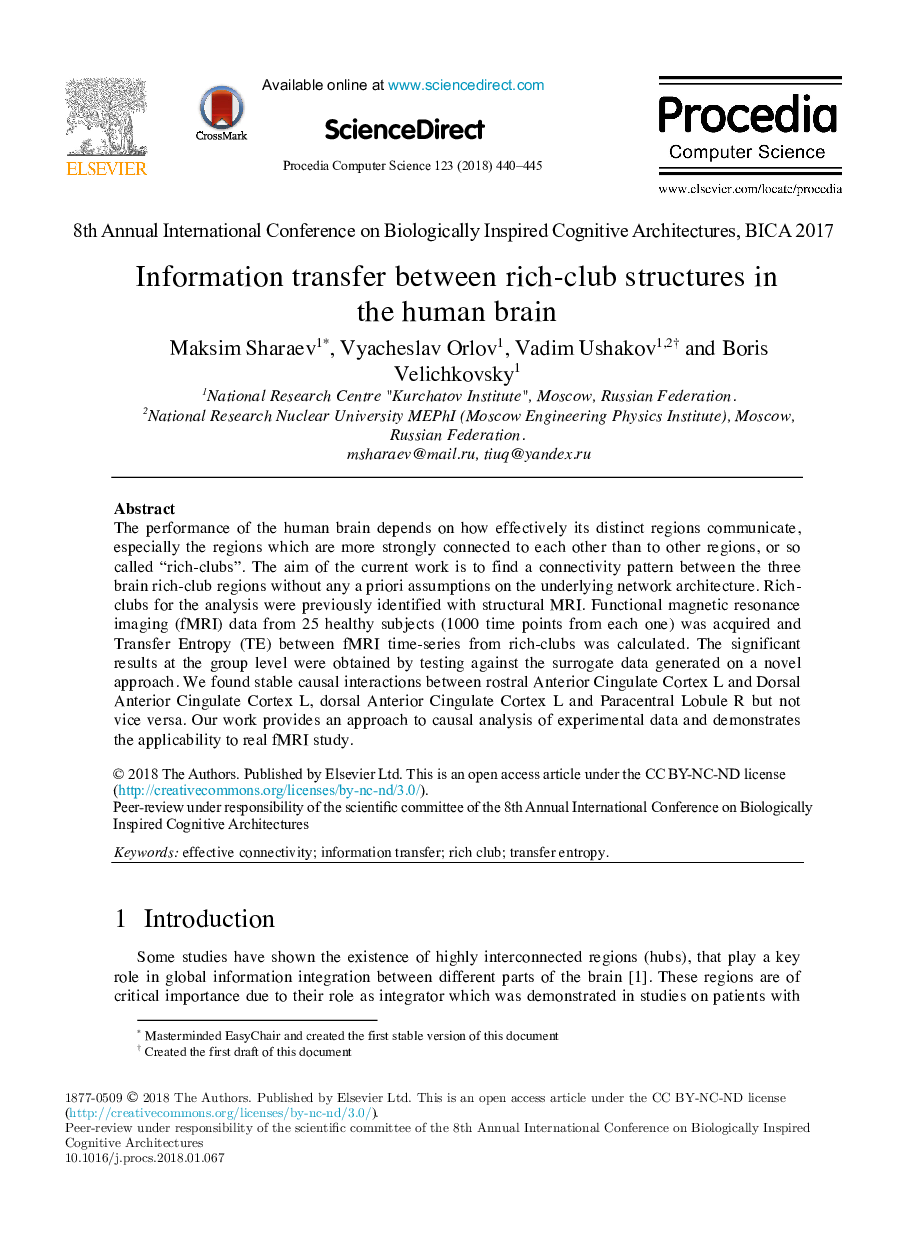| Article ID | Journal | Published Year | Pages | File Type |
|---|---|---|---|---|
| 6900935 | Procedia Computer Science | 2018 | 6 Pages |
Abstract
The performance of the human brain depends on how effectively its distinct regions communicate, especially the regions which are more strongly connected to each other than to other regions, or so called “rich-clubs”. The aim of the current work is to find a connectivity pattern between the three brain rich-club regions without any a priori assumptions on the underlying network architecture. Rich-clubs for the analysis were previously identified with structural MRI. Functional magnetic resonance imaging (fMRI) data from 25 healthy subjects (1000 time points from each one) was acquired and Transfer Entropy (TE) between fMRI time-series from rich-clubs was calculated. The significant results at the group level were obtained by testing against the surrogate data generated on a novel approach. We found stable causal interactions between rostral Anterior Cingulate Cortex L and Dorsal Anterior Cingulate Cortex L, dorsal Anterior Cingulate Cortex L and Paracentral Lobule R but not vice versa. Our work provides an approach to causal analysis of experimental data and demonstrates the applicability to real fMRI study.
Related Topics
Physical Sciences and Engineering
Computer Science
Computer Science (General)
Authors
Maksim Sharaev, Vyacheslav Orlov, Vadim Ushakov, Boris Velichkovsky,
